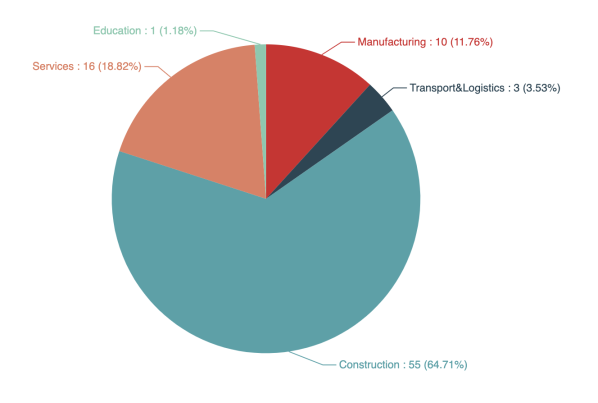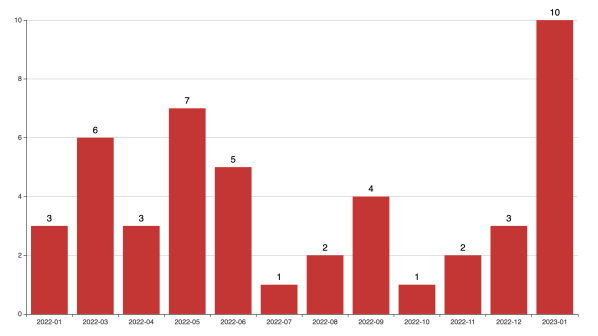
Photograph: humphery / Shutterstock.com
Wage arrears accounted for 93 percent of incidents collected in CLB’s Strike Map in January 2023. Migrant workers in the construction and manufacturing industries were particularly affected by the economic conditions in China that have led to widespread wage arrears, and they protested to try to get their pay before the annual holiday. CLB analyses this trend below.
But first, don’t miss the content CLB has published recently:
- China Labour Bulletin Strike Map data analysis: 2022 year in review for workers' rights. Analysis of CLB’s labour data collected in 2022 shows it was a difficult year for workers in China, and 2023 is already gearing up for intensifying labour conflicts if workers continue to go without representation. In 2022, China’s workers faced pandemic restrictions, regional lockdowns, and an economy that contributed to labour rights struggles. CLB broadly analyses the raw data collected in our Strike Map and conducts sector-by-sector analysis of issues affecting China’s workers and their labour rights, including construction, services and logistics, and manufacturing. China’s workers urgently need adequate representation for their pressing labour rights grievances, and CLB calls on China’s official union to improve its record.
- Rapid test kit factory workers protest in Hangzhou, union assistance is limited to legal remedy. Factory workers at Covid-19 rapid test kit suppliers across China are being laid off after decreased demand, and most of them are temporary and part-time workers hired by labour dispatch agencies. However, local authorities and the official trade union federations are more concerned with economic interests and stopping protests than with actually resolving workers’ dissatisfaction. At the Hangzhou Alltest (Aotai) Biotech factory on 9 January, workers took to the streets where they were beaten and confronted with police drones. The protest resulted in negotiations and wage guarantees, but the union focused its efforts on after-the-fact judicial remedies instead of representing workers at the bargaining table.
- Hong Kong-owned undergarment factory in Dongguan shuts down, orders 1700 workers to leave. Dongguan Gogo Garment Manufacturing Ltd. is the largest undergarment factory in Dongguan, China’s manufacturing hub, and it supplies high-end brands in Europe and the Americas. The reputable factory was reported to have paid decent wages and been stable employment for decades before recently owing workers wages and social insurance. But now the owners have no funds to compensate workers in light of the sudden layoffs. The factory’s closure calls into question global supply chain practices and brand responsibility since the start of the pandemic.
- January 2023 Labour News Roundup: Effects of post-Zero Covid economy on China’s workers. In this edition: Lunar New Year, spring migration, and migrant worker wage arrears; “PCR test economy” crumbles but manufacturing sector as a whole may see some recovery; university graduates adjust employment expectations.
January 2023 data shows property market woes affect construction workers ahead of Lunar New Year; increase in worker protests in manufacturing sector
CLB’s Strike Map and Workers’ Calls-for-Help Map both show an increase in workers in the construction industry facing labour problems. Out of 85 incidents collected in the Strike Map last month, about 65 percent were in the construction industry. This is up from 52 percent in December 2022 and 45 percent in November 2022. Out of 202 incidents in the Calls-for-Help Map in January 2023, 51 percent were in the construction sector, up from 44 and 46 percent in December and November 2022, respectively.


